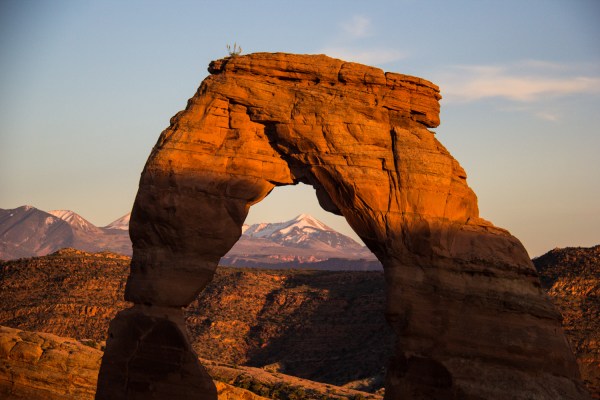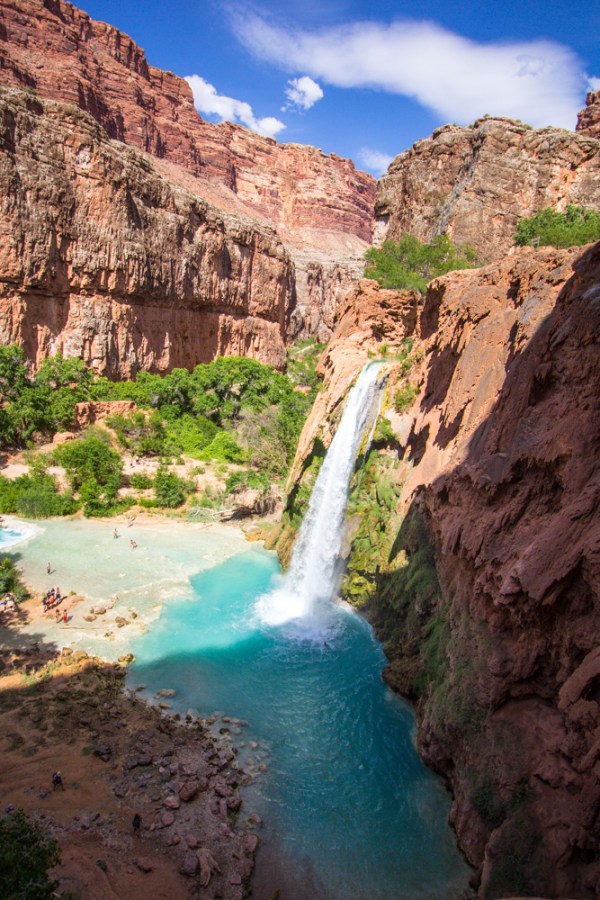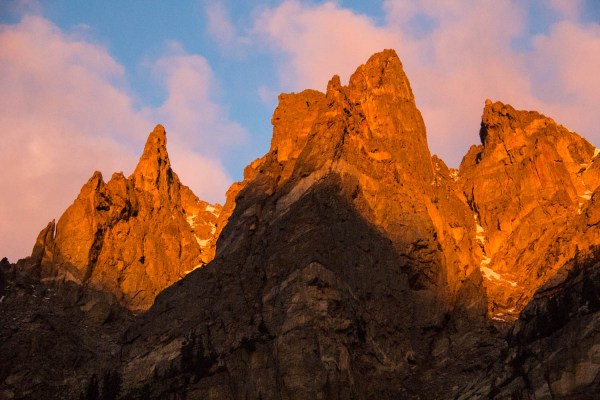The New Year is here, and chances are you just made a list of resolutions. It probably looks something like this: build a better work–life balance, eat fewer cookies next Christmas, get outside more often. These are all great goals, but in 2016, let’s do even more.
The great outdoors is having a moment. Big brands are encouraging people to take a hike, and websites promoting outdoor recreation have seen phenomenal growth. An estimated 300 million people drove through, camped at and used the outhouses in our national parks in 2015, and 2016 is set to break another record. This is all great news—We love nature! We want to go play in it!—but our enthusiasm comes at a cost.

Delicate Arch, one of the most popular photo destinations at Arches National Park in Utah.
We’re enjoying the outdoors, but we’re not protecting it. So as we turn the corner to a new year, let’s make a resolution not just to get outside, but to do so sustainably and responsibly. Let’s not pitch tents where we shouldn’t, or build campfires next to scenic overlooks. Let’s not go into off-limit areas just for a good photo. Let’s not leave any garbage behind. And for those of us following all the rules—let’s pick up any garbage we find.
The 7 Leave No Trace Principles
Luckily, we have a set of guidelines we can follow to make sure we strive to protect the outdoors this year. The Leave No Trace Center for Outdoor Ethics has developed seven principles for responsible behavior in nature. Most of us get the gist, but here are a few of the more common infringements that even I’m guilty of. Below are examples that help drive the point home so we can all get outside for generations to come (for the full LNT descriptions, look here).
1. Plan Ahead and Prepare
WHAT IT REALLY MEANS: Know the rules and regulations of where you’re camping. Do you need a bear canister? Can you bring your dog? Also, make sure you’re prepared for bad weather and emergencies. [Just an aside: There was massive flooding in Havasu Canyon in 2008, and campers had to scramble to high ground!]

Havasu Falls in Arizona sees a lot of foot traffic these days. Help protect its waters by following the Leave No Trace principles.
2. Travel and Camp on Durable Surfaces
WHAT IT REALLY MEANS: Camp in a designated campsite, or on rock, dry grass or snow at least 200 feet from rivers and streams, unless you’re in a designated area that allows it.
3. Dispose of Waste Properly
WHAT IT REALLY MEANS: If you’re in the backcountry, dig a 6-inch-deep hole for human waste (bring a trowel!) and pack out your used toilet paper. Also, do not wash yourself or any plates or utensils, including coffee mugs, in creeks or rivers.
4. Minimize Campfire Impacts
WHAT IT REALLY MEANS: That fire by the side of the lake you saw on Instagram? It should not be repeated.

The mountains must’ve called everyone this weekend to Rocky Mountain National Park in Colorado.
5. Leave What You Find
WHAT IT REALLY MEANS: You stole that rock collection from Mother Nature. Leave things, big and small, where you find them!
6. Respect Wildlife
WHAT IT REALLY MEANS: Don’t feed the gray jays (also known as camp robbers) just for a cool photo, or any other animal for that matter. And don’t walk up to a bison at Yellowstone for a selfie.
7. Be Considerate of Other Visitors
WHAT IT REALLY MEANS: Remember the time you had a terrible roommate? Don’t be that guy at your local campsite, or even deep in the backcountry. Keep your voices (and any music) low. Let nature do the talking.
Have any fun 2016 outdoor adventures planned? We’d love to hear them in the comments below.
